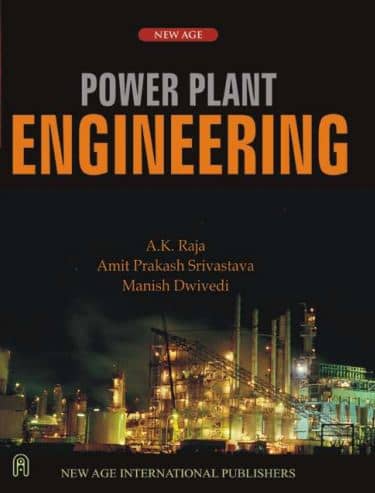‘Power Plant Engineering’ PDF Quick download link is given at the bottom of this article. You can see the PDF demo, size of the PDF, page numbers, and direct download Free PDF of ‘Power Plant Engineering Book’ using the download button.
Power Plant Engineering Book PDF Free Download

Power Plant Engineering
POWER
Power is the rate doing work, which equals energy per time. Energy is thus required to produce power. We need energy to run power plants to generate electricity.
We need power to run our appliances, and heat our homes. Without energy we would not have electricity.
The units of power are watts, joules per second, and horsepower,
where; 1 Watt = 1 joule per second
1 Kilowatt = 1, 000 Watts
1 Meguwatt = 1, 000 kilowatts
= 1 horsepower
Electricity is the most convenient and versatile form of energy. Demand for it, therefore, has been growing at a rate faster than other forms of energy.
Power industry too has recorded a phenomenal rate of growth both in terms of its volume and technological sophistication over the last few decades.
Elec tricity plays a crucial role in both industrial and agricultural sectors and, therefore, consumption of electricity in the country is an indicator of productivity and growth.
In view of this, power development has been given high-priority in development programme.
POWER DEVELOPMENT IN INDIA
The history of power development in India dates back to 1897 when a 200 kW hydro-station was first commissioned at Darjeeling.
The first steam station was set up in Calcutta in 1899. By the end of 1920, the total capacity was 130 mW, comprising. Hydro 74 mW, thermal 50 mW and diesel 6 mW.
In 1940, the total capacity goes to 1208 mW. There was very slow development during 1935-1945 due to Second World War.
The total generation capacity was 1710 mW by the end of 1951. The development really started only after 1951 with the launching of the first five-year plan.
During the First Plan, the construction of a number of Major River Valley Projects like Bhakra Nangal, Damodar Valley, Hira Kund and Chambal Valley was taken up.
These projects resulted in the stepping up of power generation. At the end of the First Plan, generation capacity stood at 34 2 lakh kW.
Emphasis in Second Plan (1956-61) was on development of basic and heavy industries and related need to step up power generation.
Installed capacity at the end of Second Plan reached 57 lakh kw. comprising 3800 mW thermal and 1900 MW hydel.
| Author | A.K Raja Amit Prakash Srivastava |
| Language | English |
| Pages | 491 |
| PDF Size | 3.5 MB |
| Category | Engineering |
Related PDFs
Production Planning And Control: Text And Readings PDF
Power Plant Engineering Book PDF Free Download
